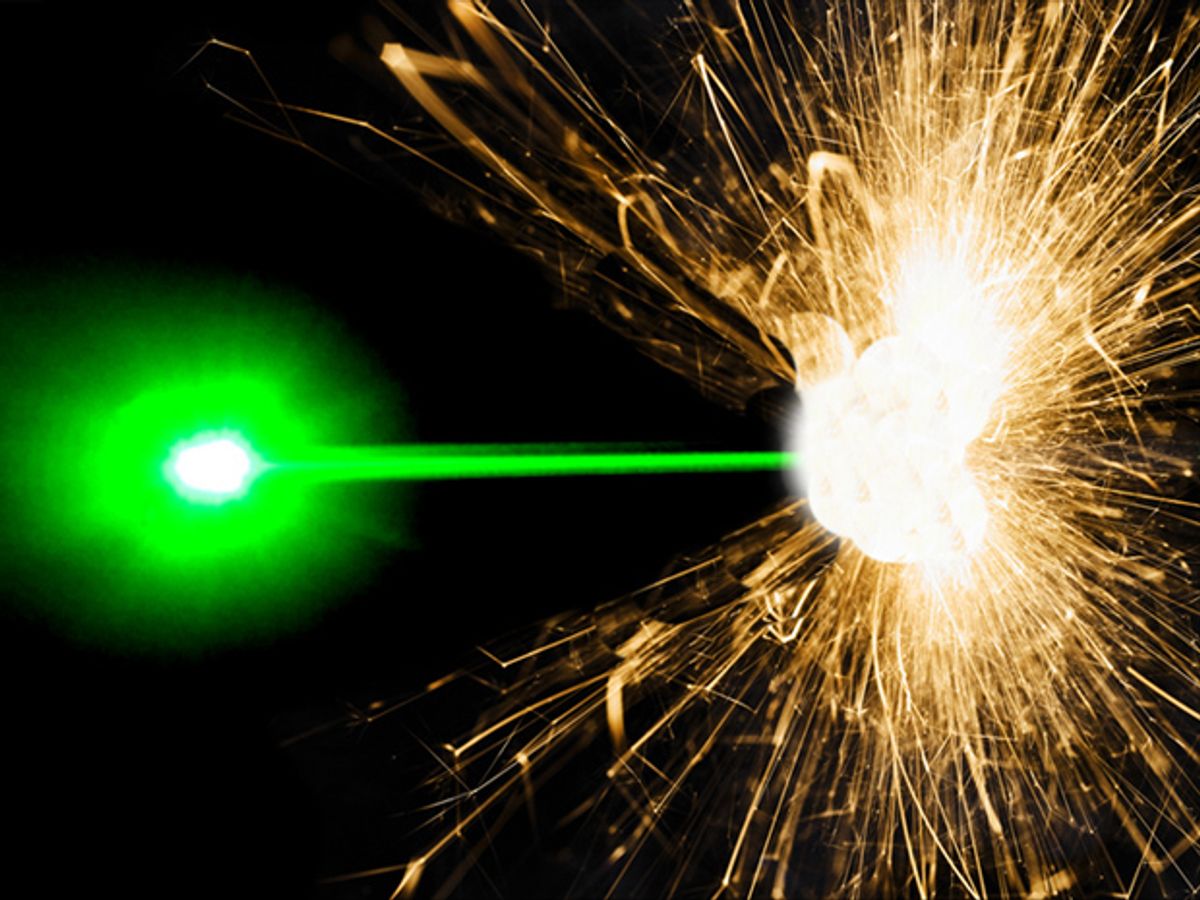In the movies, lasers make things explode. Occasionally, they make things explode in real life, too. Even more occasionally, they do this in a way that’s beneficial, by making the explosions that we rely on every day even better. Lasers: making your daily explosions 27 percent more explodey. Let’s do it.
Unless your life is way more exciting than mine, most of your daily explosions probably take place inside the engine of your car. In a conventional internal combustion engine, a mixture of fuel and air explodes to push down a piston, converting chemical energy into mechanical energy. The explosion is triggered by spark plugs that live at the top of the combustion chamber, using sparks to ignite the fuel air mixture. This works fine, but it’s not particularly efficient, since the ignition point is at one edge of the chamber. Engines move fast enough, and the combustion cycle is short enough, that the entire mixture doesn’t have a chance burn completely, leading to unburned fuel, which is bad for both engine efficiency and the environment.
Lasers can fix this problem by igniting the fuel in the middle of the combustion chamber instead of at the outer edge. This results in a much more complete burn, so you get more bang for your buck, literally. Also, lasers can be fired with nanosecond timing (multiple times per combustion cycle if necessary), and even targeted at different areas of the combustion chamber. The increased energy output allows for leaner fuel-air mixtures, increasing overall fuel efficiency by 27 percent while lowering emissions. Really, it's a much better way to do things. Which should not be surprising. Because lasers.
In 2011, Toyota got laser ignition to work in a lab, using 10 millijoule pulses of a few nanoseconds each. At that point, the primary issue was stuffing a powerful enough laser into a real engine, and Toyota didn’t end up taking things much farther. ARPA-E has been funding a company called Princeton Optronics to get laser ignition to work in practical applications, and last week, the company presented a functional, laser-ignited automobile engine at an ARPA-E conference.
As this research is still in the prototype stage, it’s hard to say when we're all going to be able run out and swap our spark plugs for laser igniters. It’s also hard to say when it will be cost effective for consumers to actually do that. What might be more likely to happen is to see laser ignition systems show up in areas where reliability is paramount (like aircraft), where increases in fuel efficiency can make an enormous difference (like the shipping industry), or where price is no object and you really need to blow up a planet.
Evan Ackerman is a senior editor at IEEE Spectrum. Since 2007, he has written over 6,000 articles on robotics and technology. He has a degree in Martian geology and is excellent at playing bagpipes.



